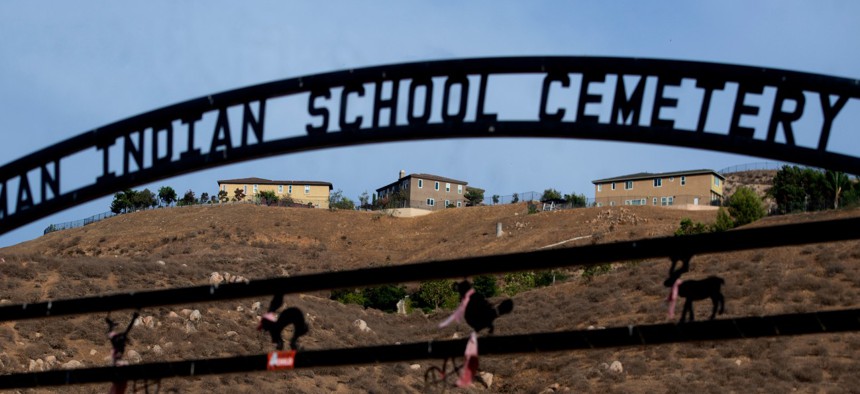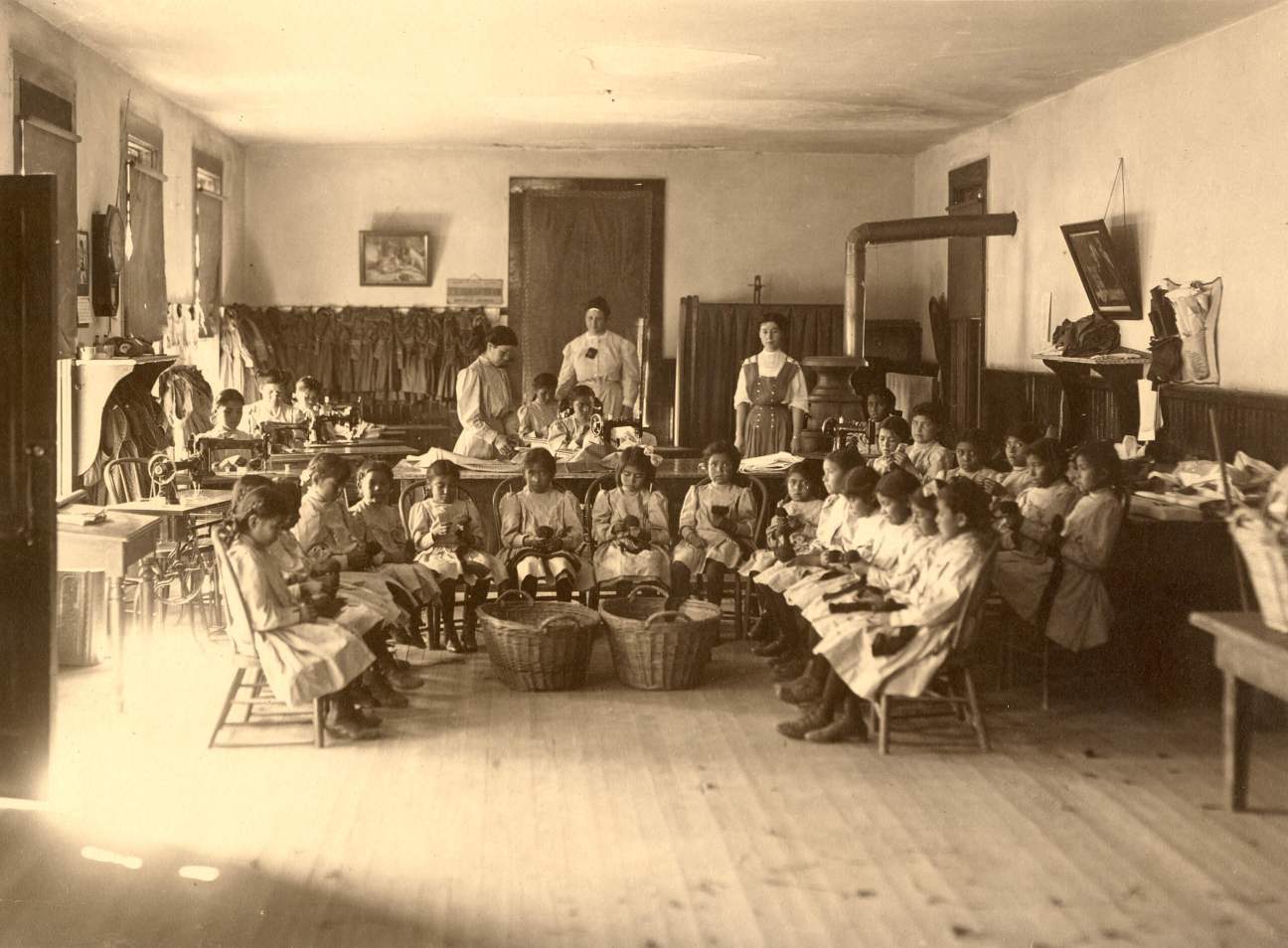
Sherman Indian School Cemetery is in Riverside, Calif. The digitization project aims to address the “troubled legacy of federal Indian boarding school policies with the goal of addressing their intergenerational impact and shedding light on the traumas of the past,” according to the Department of the Interior. Cindy Yamanaka/MediaNews Group/The Riverside Press-Enterprise via Getty Images
Government Agencies Work to Document the Painful Past of Indian Boarding Schools
The National Endowment for the Humanities has earmarked $4 million to support the digitization of records from the United States’ system of 408 federal Indian boarding schools.
The Department of the Interior and the National Endowment for the Humanities are partnering to preserve oral and digital histories and records of federal Indian boarding schools across the U.S.
The National Endowment for the Humanities (NEH) has earmarked $4 million to support the digitization of records from the United States’ system of 408 federal Indian boarding schools. It will also help support a permanent oral history collection.
“It was very important for us as an agency to say that we want to support this. We want to help to digitize the records, so that they can be accessible to the American public, and to ensure that we are supporting the oral history project as it moves forward,” Shelly Lowe, NEH chair, told the Daily Yonder.
The digitization project is part of the Federal Indian Boarding School Initiative, which aims to address the “troubled legacy of federal Indian boarding school policies with the goal of addressing their intergenerational impact and shedding light on the traumas of the past,” according to the Department of the Interior.
“Federal Indian boarding school policies have touched every Indigenous person I know," said Interior Secretary Haaland in a statement. "... This is the first time in history that a U.S. Cabinet Secretary comes to the table with this shared trauma, and I’m determined to use my position to help communities heal.”

She said the initiative is "one step, among many" to address the legacy of the schools, which the Smithsonian Institution says were "founded to eliminate traditional American Indian ways of life and replace them with mainstream American culture."
Lowe said the federal Boarding school history is a part of history that hasn’t been told yet.
“I think that there are many individuals across the United States who are unaware of this history,” Lowe said. “And I think it's important … to make materials available so we can all understand our history as a country, and I feel strongly that this is a history that needs to be told.”
Lowe notes that in May 2022, Interior Secretary Deb Haaland and Assistant Secretary for Indian Affairs Bryan Newland released Volume 1 of the investigative report called for as part of the Federal Indian Boarding School Initiative. The volume examines the facts and consequences of historical federal Indian boarding school policies. Volume 2 is expected to be published by the end of 2023.
“After reviewing the report, it became clear that the work that the Department of the Interior was attempting to do to bring records from the federal Indian boarding schools forward to be digitized fit exactly into the work that we do at the National Endowment for the Humanities,” said Lowe, who is a citizen of the Navajo Nation. “The conversations have kind of moved forward as the project has moved forward.”
Lowe said the majority of the NEH funding will go toward supporting the digitization of the records from the federal Indian boarding schools.
“So there's a team that has been going through the records pulling them out,” she said. “Our funds will digitize those records, then, as we move forward with the project, or as the Interior moves forward with the project and kind of decides where it wants to go, those records will hopefully be made accessible to the public in ways where you could click on a website and you could find records from a certain school.”
This will allow families, tribes and communities access to the records from that individual school, including records of students, if possible, she added.
The digitization project is building upon other NEH-funded projects, including an exhibit that looks at federal Indian boarding schools that is currently traveling and at a school in Los Angeles, as well as supporting a digital reconciliation project at Genoa Indian School in Nebraska. There, they are digitizing and transcribing records and photographs as well as conducting oral histories and looking at historic materials to document the students who went to that school between 1884 and 1934, Lowe said.
This article first appeared on The Daily Yonder and is republished here under a Creative Commons license.
![]()
NEXT STORY: Coronavirus Roundup: The Last One






